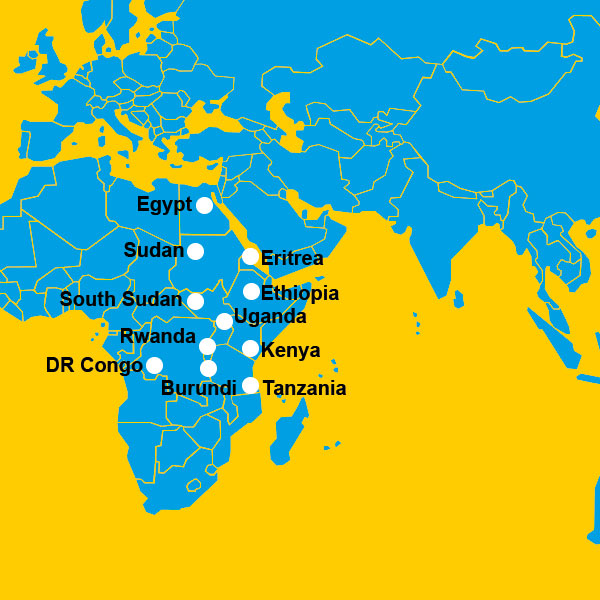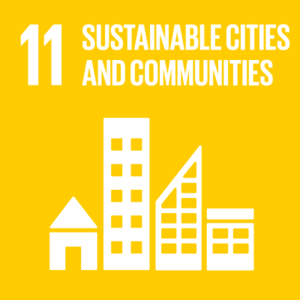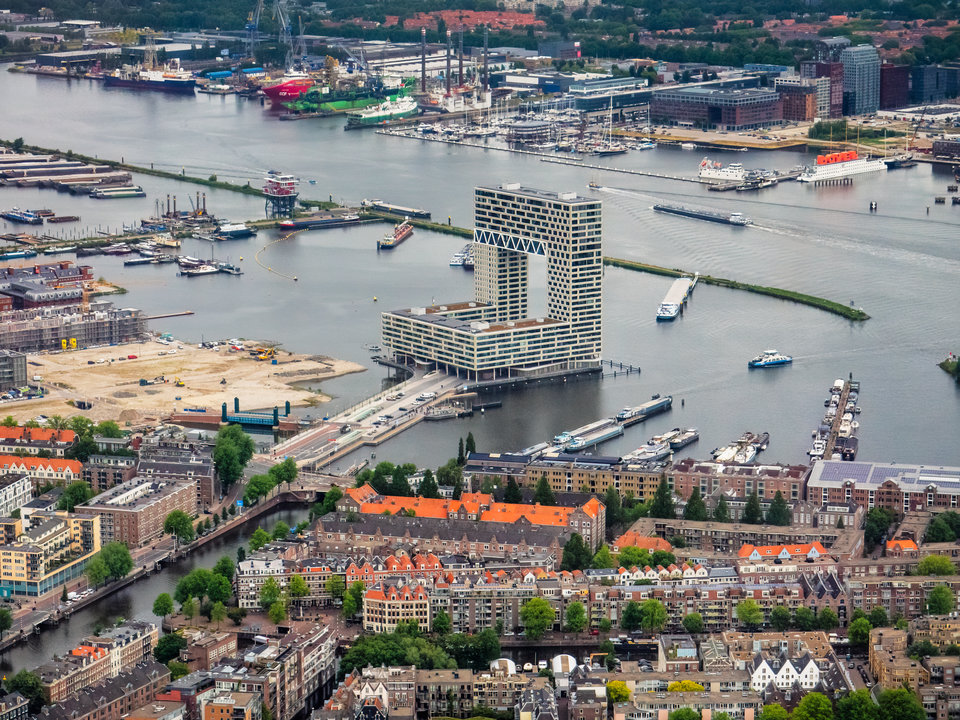Professor Bartel Van de Walle and researcher Kenny Meesters are investigating the role played by information in emergency relief efforts. In the aftermath of Hurricane Harvey in Texas, they collected data during a special hackathon for students. One conclusion could be drawn straight away: Delft students are keen to help.
In August 2017, Hurricane Harvey raged over Texas, causing extreme rainfall in Houston, 48 fatalities, tens of thousands of evacuees, and what is estimated at more than 100 billion dollars of damage. Researchers from TU Delft set up a Harvey Texas Research Team to analyse what could be learned from this massive disaster for water security and emergency relief efforts in both the US and the Netherlands. The project began with a quest for information, in the form of the Harvey Hackathon. Around a hundred students signed up from across the entire campus and beyond. “People around here wanted to do something, and our aim was to reach as many of them as possible,” explains Professor Bartel Van de Walle, Professor of Policy Analysis at the Faculty of Technology, Policy and Management.
A data-rich event
Van de Walle and his doctoral student Kenny Meesters were able to make good use of this help. Hurricane Harvey was what is known as a data-rich event. “A great deal of information was available: on social media, on news sites, in organisations’ reports, you name it. That is a huge amount of work for the two of us. By outsourcing it to people who were keen to help, we got lots of information that we might not have found ourselves. It was a win-win situation,” says Van de Walle. Nor did the students need any special expertise: “The idea was that you could get going in five minutes. If you got the hang of it during the day, or if you had experience in areas like GIS or mapping, you could do more challenging things,” explains Meesters. “In this way, a form of multidisciplinary cooperation emerged in a very organic way.”
The participating students were divided into groups, based on themes and accompanying research questions. “I coordinated the ‘airports’ theme: which airports closed when and why, and what effect did this have? Another theme was ‘communities’: how did they respond and how did they organise themselves?,” explains Van de Walle. One outcome was that Airbnb encouraged hosts to make their homes available to evacuees and relief workers for free, by waiving their own service charges; a nice practical example of how sharing information online can support relief work. This and other data resulting from the hackathon will serve as input for follow-up research, but for Van de Walle and Meesters, there were additional results. “The students learned new data-analysis methods in a very practical way, outside the lecture hall. I think that skills that are learned in this way sink in better, not least because they were really motivated to learn something,” says Meesters.
Scope
Van de Walle is enthusiastic about the scope of their research. “We had suspected the interest went far beyond our own faculty, but it was nice to see it,” he says. The fact that the entire university is cooperating on the theme of emergency response is also essential: “It is not something that you can solve from a single discipline; this subject is multidisciplinary by its very nature.” In that respect, the contacts will certainly prove useful. “Now we know many students who want to do more in this area. Not only that, but the different coordinators for the themes came from across the whole university. Take Stef Lhermitte, for example, who does research on satellite images.” Meesters adds: “By organising these kinds of events, we build bridges with other fields who are working on subjects such as block chain technology or drones, and we want to know how these can be used when disasters occur. Conversely, if someone comes up with an idea for responding to emergencies, they know where to go. And all this without having to set up an institute or suchlike. It really has become a movement.” That movement is gaining increasing momentum, as the TU Delft Global Initiative has also embraced the theme of disaster management.
Fieldwork
A ‘bottom-up’ way of working comes naturally to both Van de Walle and Meesters. During their fieldwork, they try to divide their time between research and contributing to relief work. “Increasing numbers of scientists are travelling to disaster areas. But in that case, you take up a bed and other scarce resources, and you also keep people who should be helping others from their work,” explains Meesters. “I have a background in IT, so I try to make a contribution as an ‘information officer’. Little by little, you figure out what is going on. If you then return a few weeks later, it is much easier to talk to people. That is how I try to combine it.” Van de Walle agrees with this approach: “The last thing aid organisations need is an academic coming to tell them how to improve things. It is essential to have ‘street cred’, and in order to get that, you need to build up a relationship.”
“We now know the actors, the people and organisations; then you are able to achieve something,” he continues. “We try to help relief workers throughout the hierarchy; that is, both those sleeping overnight in tents and the directors leading the operations. In the country itself, but also in Geneva and New York.” New York is home to UNOCHA, the United Nation’s Office for the Coordination of Humanitarian Affairs, where he did research as a consultant for several years. “Along with others, I worked on a report for UNOCHA on the response to the war in Syria, focusing on information management. In that case, the surrounding countries were trying to organise emergency relief from their offices, but they were completely overwhelmed with requests for information from the New York office, which had to brief the Security Council. Then the policy was adjusted, so that they only had to provide the most urgent information. That policy change had a significant impact at the operational level. We therefore try to achieve impact where it is most effective: at the level of the organisation.”
A clear division
This is a great achievement, but plenty of challenges remain. “The number of disasters is rising,” says Van de Walle. “Global changes are playing a role in this. Climate change is real and it is having a great impact on people who already live in vulnerable regions, in crowded cities close to flooding areas.” A clear division can be observed in this. “At the same time as Hurricane Harvey, there was mass flooding in South East Asia. Many more people died there, but the financial damage was not comparable to that done by Harvey; a striking difference between two disasters that ultimately had the same cause,” he explains. “Both were terrible – we don’t make any value judgement regarding the two,” adds Meesters. Nor does our own region remain out of range. “It is coming closer; just look at the trouble caused by the rains in the summer, or by forest fires in Southern Europe. Even though there aren’t thousands of deaths, the risks are getting greater.”
In the response to emergencies, the differences between humanitarian disasters and disasters that cause significant economic damage are in fact smaller than you would think. “What we saw with Harvey was that coordination did not go smoothly and people had to fend for themselves; that is something we also see with the victims of other disasters. For us as researchers, it is therefore interesting to keep looking at what we can learn from a disaster in order to apply it to others,” says Van de Walle. Coordination is certainly a crucial factor. “An international call for aid must come from the country itself. This activates a response from a large number of countries. Then it is essential that we don’t all do the same thing and only blankets are flown in, for example. This doesn’t always go well, and we are trying to work on that.”
A disrupted economy
Another problem is that bringing in relief supplies on a mass scale can disrupt the local economy. “If rice is flown in and distributed, why would a farmer grow any?,” asks Meesters. “At the very least, you have to build in a transition period, in order to allow agriculture to get going again before you stop providing relief.” According to Van de Walle, the message is getting through: “In recent years, there has been greater emphasis on providing financial assistance, so that local economies can get started again,” he says. “Whereas in the past, people used to look at what had disappeared, now they are looking at what still remains to be built on,” adds Meesters. “Communicating with citizens is also becoming more and more important. They know what is needed for reconstruction, whether it can be found locally, and whether there are people who can do this or who are being trained for this. The challenge is to map this out quickly.”
Fake news
Unfortunately, not all of the information available is equally reliable. “The exchange and processing of information during disasters is difficult, and verification even more so,” says Van de Walle. Information might be outdated or interpreted incorrectly, but at present, the researchers are also concerned about the deliberate spreading of misinformation. “For us, these are interesting problems, but it can have serious consequences for the deployment of relief aid. If it is claimed that a village has been destroyed, but this turns out to be untrue, you have wasted your time and resources. I predict that this problem is only going to get worse.” The phenomenon mainly occurs during what are known as complex man-made disasters, such as wars. “When a natural disaster occurs, you have a common enemy, but where parties are fighting one another, information also becomes a weapon,” says Meesters.
The more data play a role in emergency response, the greater a risk factor disinformation becomes. Within Van de Walle’s research group, doctoral candidate Amir Ebrahimi Fard is investigating the spreading of fake news in disaster situations. There are additional reasons to be cautious, however: “You have to keep thinking about what your information represents,” stresses Meesters. “A line in a spreadsheet represents a person. If there is an error in an algorithm and the supermarket sends you the wrong special offer, that is not a big deal; but it is not something you could allow in an emergency response.” Van de Walle agrees with this: “The data revolution means that people just see data now. You can project these data onto a map or put them in a chart and then base your decisions on this, but that is not without its risks.”
Van de Walle and Meesters cannot emphasise enough that we therefore have to keep maintaining the link with practice. “You can’t solve everything with data. You have to know how the people that you are supplying it to are going to use it. If part of a map has no icons on it, that might mean that we don’t have any information, not that there is no need for aid there. That is something we all understand here, but if you are in a tent and there are helicopters flying overhead and people are yelling in your ear, it is a whole other story,” Meesters explains. This link with practice also means making their research results available to the professional field. “Normally, you would publish your research results in academic articles and share them with society via the media. For us, there is a third channel: the field in which we are working. As scientists, this shift from one viewpoint to another is extremely interesting in itself. We always try to translate our insights into something that is meaningful for the field.”
Sustainable Development Goals
Together with their contacts in the field and at TU Delft, Van de Walle and Meesters think that there is still a lot more to achieve. “Working with engineering students is fantastic. They are good at coming up with creative solutions, using new tools, and if these don’t work, they try something new. This fits perfectly with the problems that we need to tackle. There are many uncertainties and there is still much we don’t know, but you have to start somewhere,” says Van de Walle. Simply start somewhere, but with a clear goal in mind. Van de Walle’s mission is to contribute to the Sustainable Development Goals, which were drawn up by the UN in 2015 to replace the Millennium Development Goals. One major factor in these is a country’s capacity to deal with the consequences of disasters. “If the two of us can make a difference there, aided by all the knowledge and creativity surrounding us here, I will be a happy man.”
We always try to translate our scientific insights into something that is meaningful for the field.
Professor Bartel van de Walle
Global Research Areas
| Health | |
| Water | |
| Energy | |
| Disaster Prevention | |
| Urbanisation |
Contact
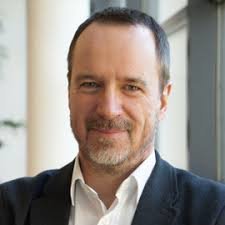
Bartel Van de Walle
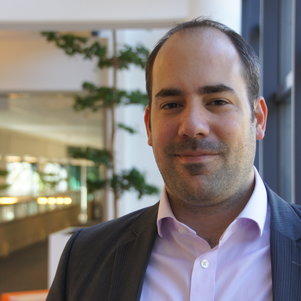
Kenny Meesters
